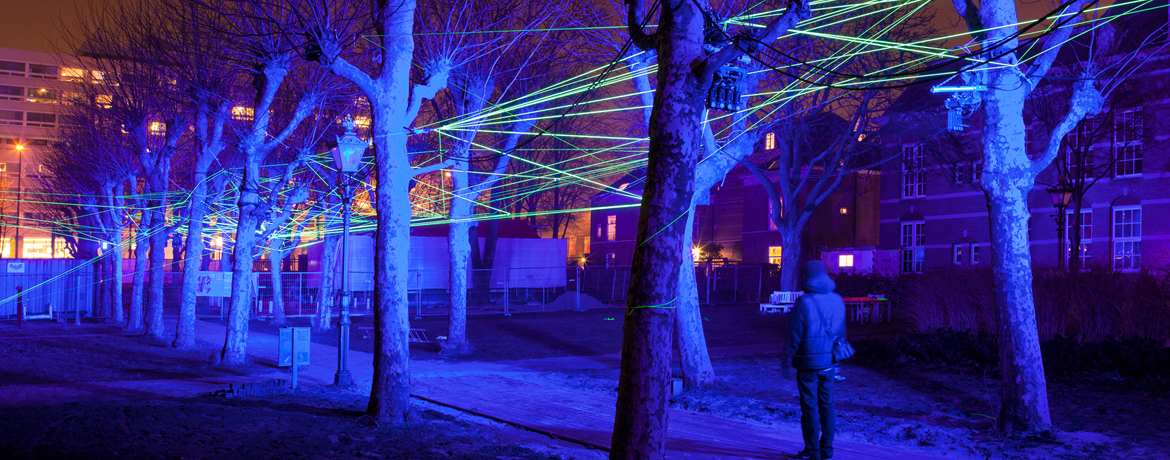Laser
"In the 1960s the first physical example of Light Amplification by Stimulated Emission of Radiation (L.A.S.E.R) was created."
In this series we will take a look at all the types of light sources across human history and show how artists have used each light source to make beautiful light art throughout Amsterdam Light Festival’s twelve editions to date. In this article we will discuss the laser.
In the 1960s the first physical example of Light Amplification by Stimulated Emission of Radiation (L.A.S.E.R.) was created by Theodore H. Maiman. Lasers are a form of coherent light. All other light we’ve seen up until now is a combination of a few different frequencies and flies out from the source in all directions, like with a light bulb. Lasers are monochromatic, meaning a single frequency of light, and travel in one direction. When two photons of light travel at the same time and in the same direction, they interfere. If they are at the same phase, they cause one beam of light to have double the energy.

A laser works when certain particles (usually gas particles) become over excited with too much energy. When they return to their unexcited state, they need to release energy which results in a photon (light). A laser works by constantly adding energy to these particles in a chamber to multiply the number of photons they release. The chamber itself uses two mirrors to force photons to be released at the same rate and phase so that they all sync up. They bounce back and forth, joining with more and more photons to increase in power. Once the photons reach the threshold, they are able to pass through one of the mirrors, all in the same direction and at the same phase making them super powerful packets of light energy. That’s why lasers can shoot very far and can be powerful enough to cut through physical material.
In Edition 6, Ai Weiwei used a combination of a laser and glass fibre optic cables to draw a Thinline of red light around the boarder of Amsterdam Light Festival.
